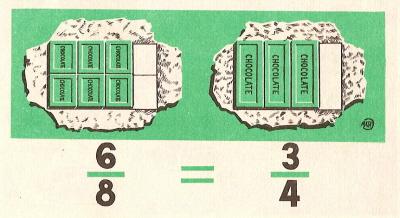
Equivalent Fractions |

1.- Equivalent Fractions.
Montse has 6/8 of one chocolate and John has 3/4 of another chocolate. They have the same amount of chocolate.
If we multiply the two digits of the fraction by 2, its value does not change. 3/4 = 3x2/4x2 = 6/8.
We can also say that when we divide the two digits of the fraction by a number, its value is not altered.
Example: 6/8 = 6:2 / 8:2 = 3/4.
Answer these questions: